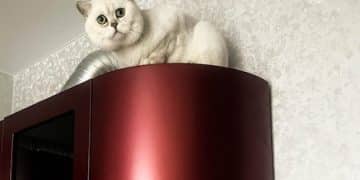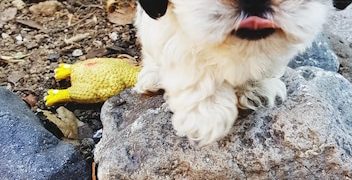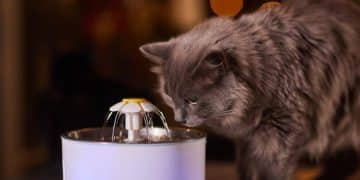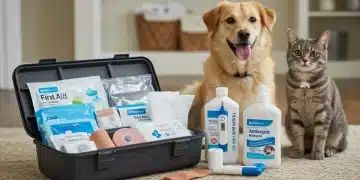The Best Pet Stain and Odor Removers: Product Reviews and Cleaning Tips
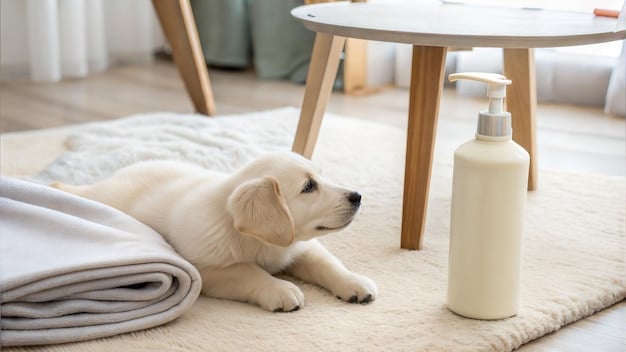
The best pet stain and odor removers effectively eliminate messes and lingering smells, utilizing enzymatic formulas and offering solutions for various surfaces and stain types.
Dealing with pet messes is a reality for many pet owners. Finding the best pet stain and odor removers can make all the difference in maintaining a clean and fresh home.
Understanding Pet Stains and Odors
Pet stains and odors can be a persistent problem, often requiring more than just standard cleaning solutions. Understanding the nature of these stains and odors helps in choosing the right remover.
Pet accidents, whether urine, feces, or vomit, contain organic compounds that bind strongly to surfaces. These compounds can be difficult to remove completely with regular household cleaners, leading to lingering odors and potential re-soiling by pets.
Why Regular Cleaners Often Fail
Many conventional cleaners mask odors temporarily but do not eliminate the source. This is because they lack the enzymes necessary to break down the organic matter in pet stains.
The Importance of Enzymatic Cleaners
Enzymatic cleaners contain enzymes that target and break down the specific molecules causing stains and odors, such as proteins, fats, and uric acid, thus providing a more thorough and lasting solution.
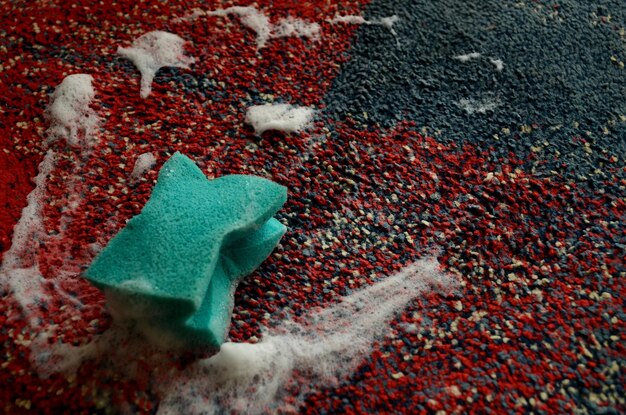
Effectively addressing these issues requires a strategy that includes immediate stain treatment, selecting the appropriate cleaning products, and employing proper cleaning methods.
Ultimately, understanding the composition of pet stains and odors is crucial for selecting the most effective cleaning products.
Top-Rated Pet Stain and Odor Removers
Choosing the right pet stain and odor remover can be overwhelming with so many options available. Here are some of the top-rated products, each with unique features and benefits.
These products have been evaluated based on their effectiveness, ease of use, safety for pets and humans, and suitability for various surfaces.
Rocco & Roxie Stain & Odor Eliminator
Rocco & Roxie is a popular choice due to its enzymatic formula that effectively eliminates stains and odors from carpets, upholstery, and other surfaces. It is also chlorine-free and safe to use around pets and children when used as directed.
Nature’s Miracle Advanced Stain and Odor Remover
Nature’s Miracle is another well-regarded option, known for its ability to tackle tough stains and odors, including urine, feces, vomit, and blood. Its bio-enzymatic formula is designed to break down organic matter at the source, preventing re-soiling.
Clorox Pet Solutions Stain & Odor Remover
Clorox Pet Solutions offers a powerful stain and odor removal solution with the added benefit of disinfecting properties. This product is designed to eliminate bacteria and viruses while removing stains and odors, making it a great choice for households concerned about hygiene.
- Effectiveness: Consider the product’s ability to remove both fresh and set-in stains.
- Safety: Ensure the product is safe for your pets and family members, especially if you have children or pets that may come into contact with treated areas.
- Surface Compatibility: Check if the product is suitable for the types of surfaces you need to clean, such as carpets, upholstery, or hardwood floors.
Selecting the right product depends on your specific needs and preferences.
Ultimately, the best pet stain and odor remover will depend on your individual needs and the types of messes your pet makes.
DIY Pet Stain and Odor Removal Methods
While commercial products are effective, there are also DIY methods that can help remove pet stains and odors. These methods often use common household ingredients and can be a cost-effective alternative.
These DIY solutions can be effective for fresh stains and odors, but may not be as powerful for set-in messes.
Baking Soda and Vinegar
Baking soda and vinegar is a classic combination for removing stains and odors. Baking soda helps absorb odors, while vinegar acts as a mild disinfectant and helps break down stains.
Hydrogen Peroxide
Hydrogen peroxide can be effective for removing stains, especially on light-colored surfaces. However, it should be used with caution as it can bleach or discolor some materials. Always test in an inconspicuous area first.
Homemade Enzyme Cleaner
You can also create your own enzyme cleaner using ingredients like citrus peels, brown sugar, and water. Fermenting these ingredients creates enzymes that can help break down organic matter and eliminate odors.
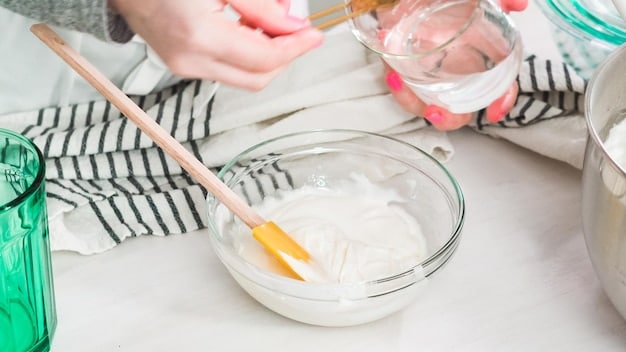
- Freshness: DIY methods are most effective on fresh stains.
- Surface Compatibility: Always test DIY solutions on a small, hidden area first to ensure they do not damage the surface.
- Safety: Use caution when mixing ingredients, and avoid using harsh chemicals that could harm your pets or family members.
DIY methods can be a great way to address pet stains and odors using readily available ingredients.
In summary, DIY pet stain and odor removal methods offer a cost-effective and natural alternative to commercial products.
How to Properly Clean Pet Stains and Odors
Proper cleaning techniques are essential for effectively removing pet stains and odors. Following the right steps can help ensure that the stains are completely eliminated and prevent re-soiling.
This involves more than just wiping up the mess; it includes treating the stain, neutralizing odors, and preventing your pet from repeating the behavior.
Immediate Action
The first step in cleaning pet stains is to act quickly. The longer the stain sits, the harder it will be to remove. Blot up as much of the liquid as possible with a clean cloth or paper towel.
Pre-Treating the Stain
Before applying any cleaner, pre-treat the stain with a stain remover or DIY solution. Allow the product to sit for the recommended amount of time to penetrate the stain.
Deep Cleaning
For carpets and upholstery, consider using a carpet cleaner or steam cleaner to deep clean the affected area. This can help remove embedded stains and odors that surface cleaning may miss.
By taking immediate action and using the right cleaning techniques, you can effectively remove pet stains and odors.
In conclusion, proper cleaning techniques are crucial for effectively removing pet stains and odors and preventing future messes.
Preventing Future Pet Stains and Odors
Prevention is key to minimizing pet stains and odors in your home. By addressing the underlying causes and implementing preventive measures, you can reduce the frequency and severity of pet messes.
This includes training, regular grooming, and maintaining a clean environment.
Regular Potty Breaks
Ensure your pet has regular opportunities to relieve themselves, especially if they are prone to accidents. Establish a consistent potty break schedule and reward them for going outside.
Training
Proper training can help prevent accidents inside the house. Use positive reinforcement techniques to teach your pet where and when to eliminate.
Regular Grooming
Regular grooming can help reduce pet odors by removing loose fur and dirt. Brush your pet regularly and bathe them as needed.
By taking proactive steps, you can create a pet-friendly environment that stays clean and fresh.
In summary, preventing pet stains and odors involves a combination of training, regular grooming, and proactive cleaning habits.
Choosing the Right Products for Different Surfaces
Different surfaces require different types of cleaning products. What works well on carpet may not be suitable for hardwood floors or upholstery. Choosing the right products for each surface is essential for effective stain and odor removal.
Using the wrong products can damage surfaces or make the problem worse.
Carpets and Rugs
For carpets and rugs, enzymatic cleaners and carpet cleaners are generally the most effective options. Look for products specifically designed for pet stains and odors.
Hardwood Floors
Hardwood floors require gentle cleaning solutions that won’t damage the finish. Avoid using harsh chemicals or abrasive cleaners. Instead, opt for pH-neutral cleaners designed for hardwood floors.
Upholstery
Upholstery can be more delicate than carpets, so it’s important to choose cleaning products that are safe for the fabric. Test the product on a small, hidden area first to ensure it doesn’t cause discoloration or damage.
| Key Point | Brief Description |
|---|---|
| 🐾 Enzymatic Cleaners | Effective against organic stains and odors by breaking them down at the source. |
| 🧪 DIY Solutions | Cost-effective and natural options like baking soda and vinegar can tackle fresh stains. |
| 🧹 Immediate Action | Blotting up messes quickly and pre-treating stains improve cleaning effectiveness. |
| 🐾 Prevention Tips | Regular potty breaks, training, and grooming minimize future stains and odors. |
FAQ
▼
Enzymatic cleaners contain enzymes that break down organic matter in pet stains, such as urine and feces, eliminating odors and preventing re-soiling, making them highly effective.
▼
No, DIY stain removal methods may not be safe for all surfaces. Always test in an inconspicuous area first to ensure they don’t cause discoloration or damage.
▼
Thoroughly clean the area with an enzymatic cleaner to eliminate odors that attract your pet back to the spot. Training and consistent potty breaks can also help.
▼
Act quickly by blotting up as much of the liquid as possible with a clean cloth or paper towel. Then, treat the stain with a stain remover or DIY solution.
▼
Many pet stain and odor removers are safe for children and other pets when used as directed. Look for products that are chlorine-free and specifically designed to be safe for households.
Conclusion
Effectively managing pet stains and odors requires a comprehensive approach, from selecting the right cleaning products to implementing preventive measures. By understanding the nature of pet stains, choosing appropriate cleaning methods, and maintaining a proactive cleaning routine, you can keep your home fresh and clean, despite the occasional pet mess.


